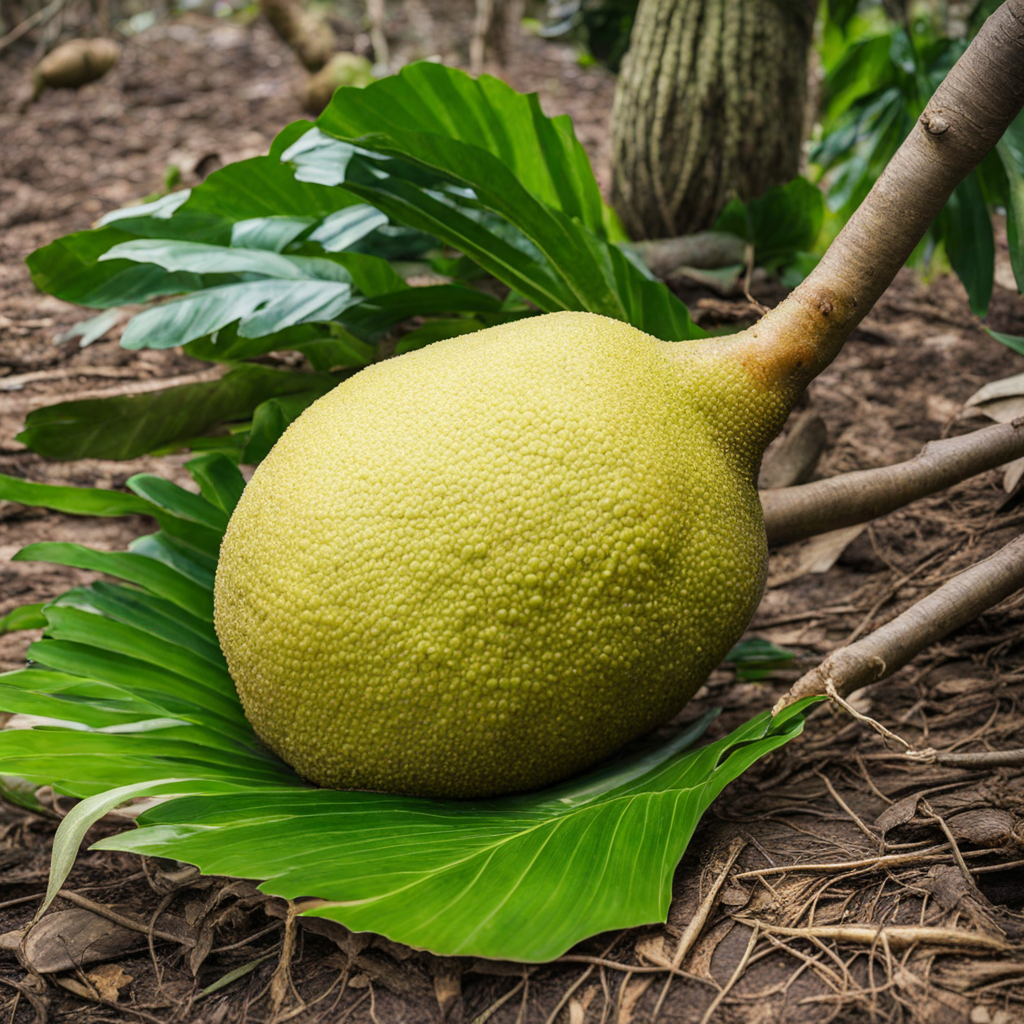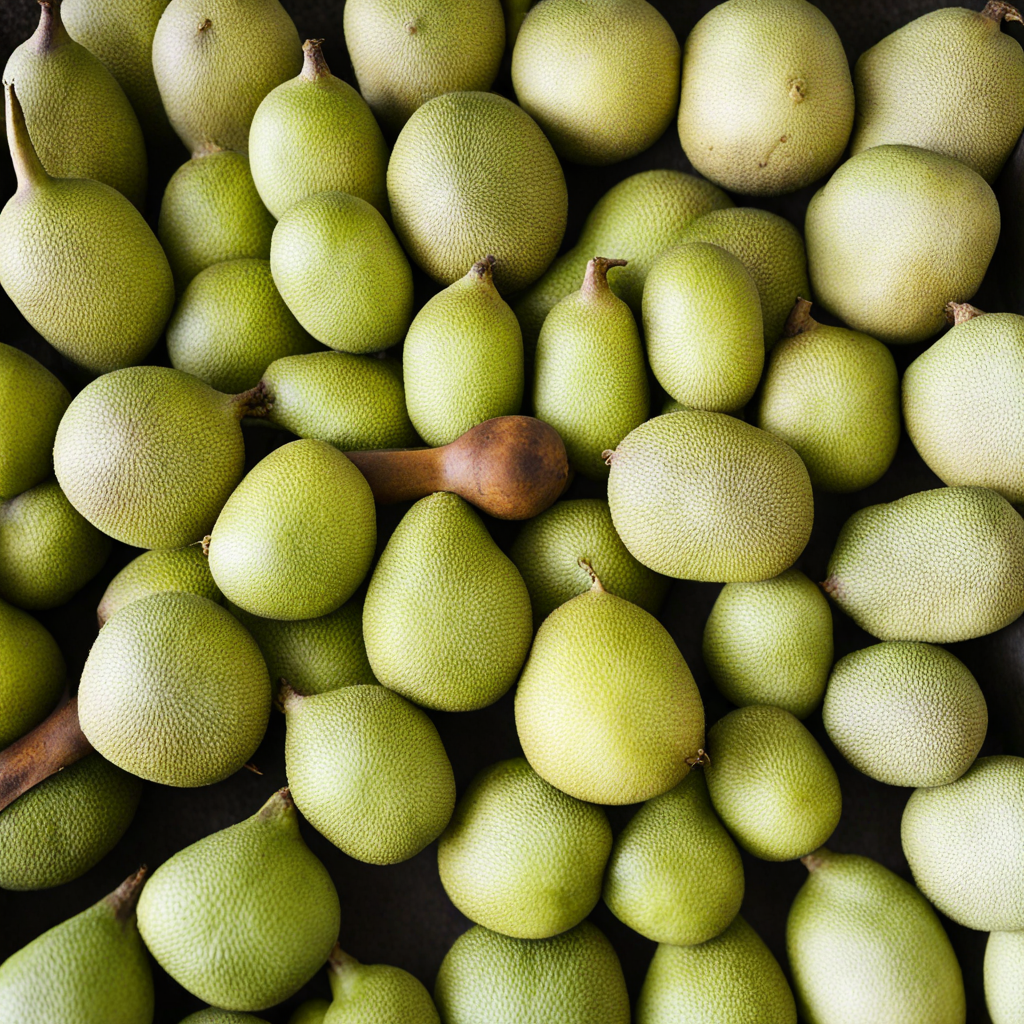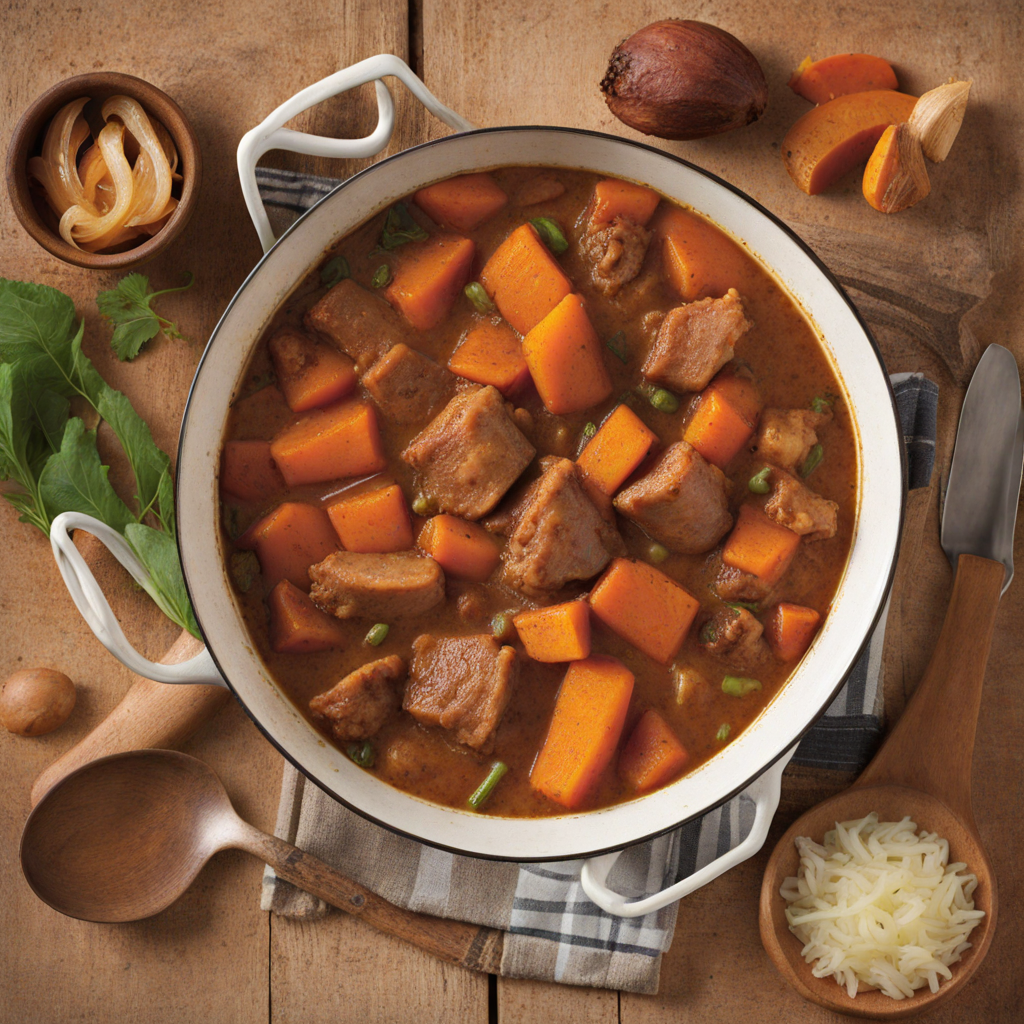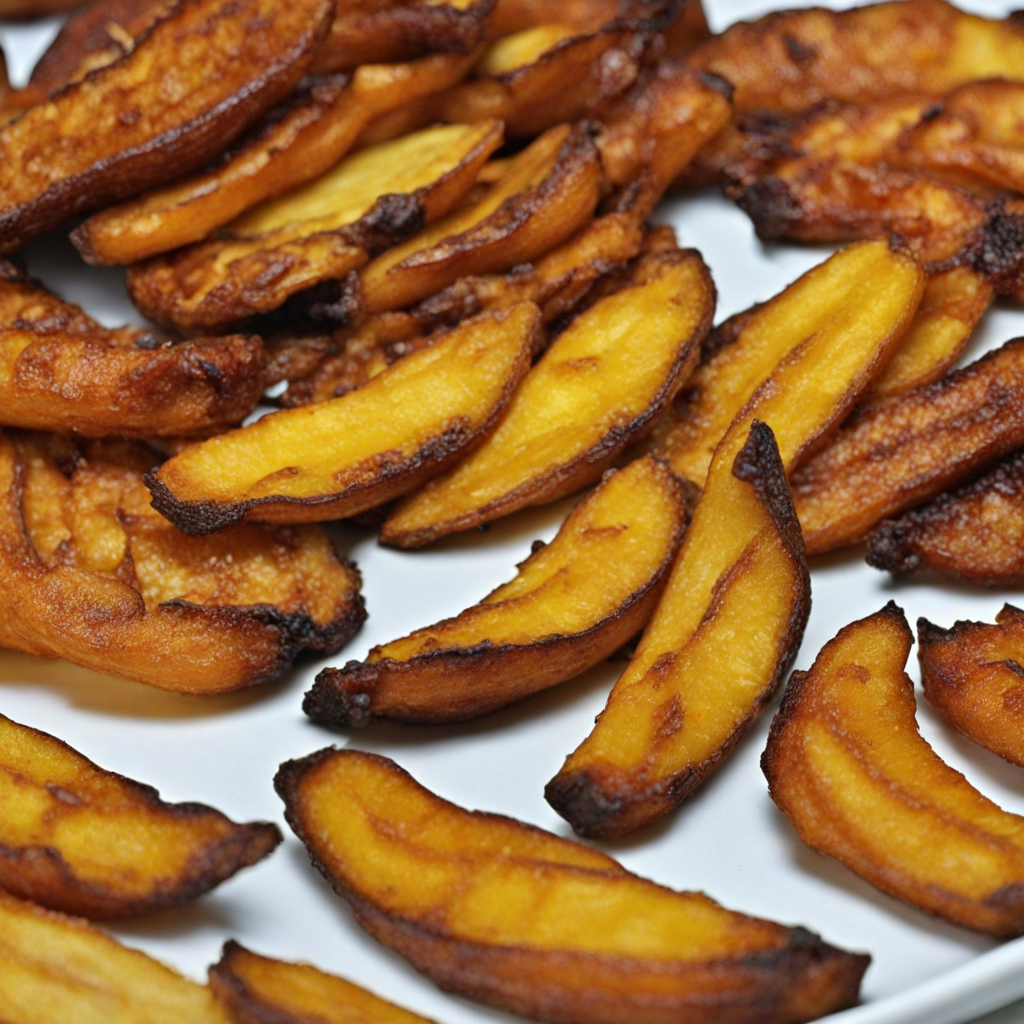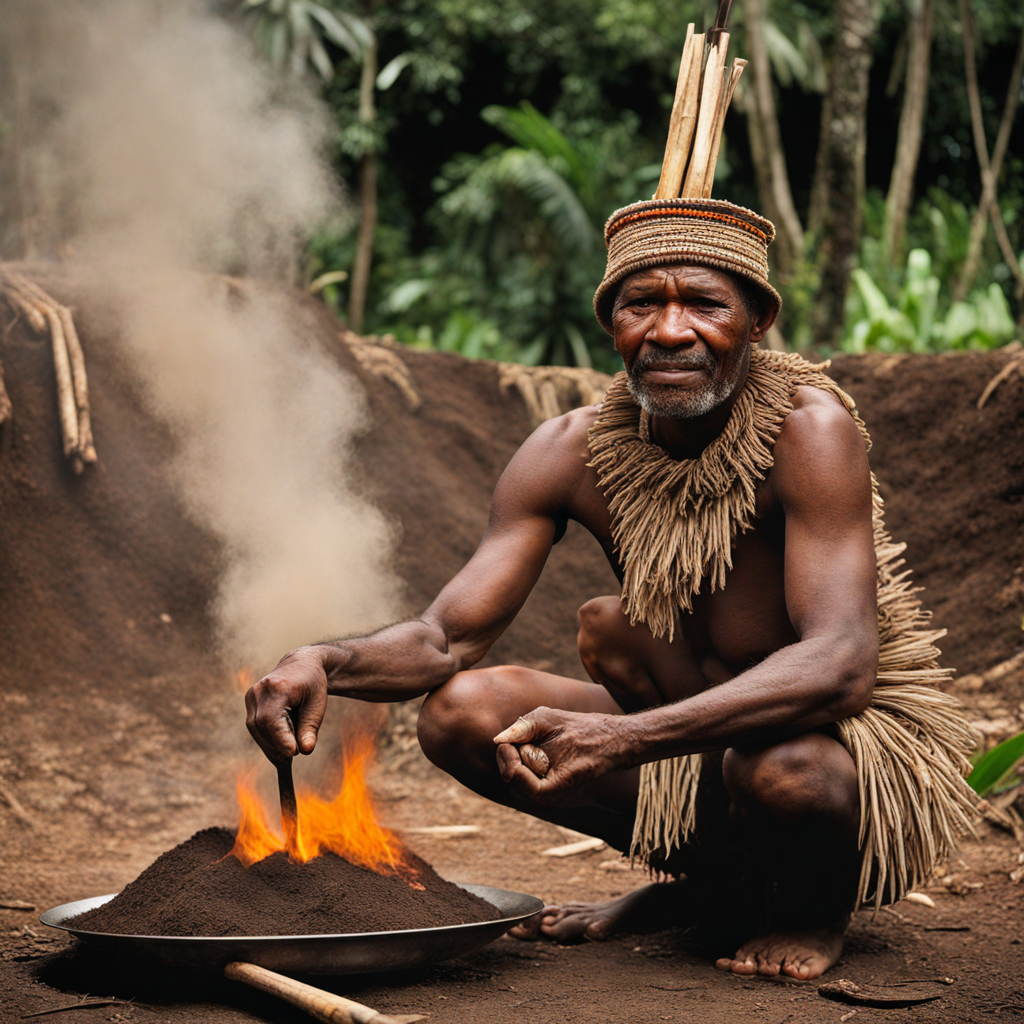Breadfruit
Breadfruit is a tropical fruit native to the Indo-Pacific region, and in Papua New Guinea, it holds a cherished place in the culinary landscape. The fruit is large, round, and green, resembling a jackfruit, with a starchy flesh that transforms when cooked. Its flavor is often compared to a combination of potato and artichoke, making it a versatile ingredient in both sweet and savory dishes. When roasted, the flesh becomes tender and slightly sweet, while boiling or steaming it brings out its creamy texture, perfect for mashing or incorporating into soups and stews. In Papua New Guinea, breadfruit is traditionally prepared in various ways. One popular method is to slice it and grill or roast it over an open flame, imparting a smoky aroma that enhances its natural sweetness. It can also be made into a staple side dish, served alongside local proteins like fish or pork, allowing the flavors to meld beautifully. Additionally, breadfruit can be used to create a unique version of fritters or chips, providing a delicious alternative to classic potato snacks. The cultural significance of breadfruit in Papua New Guinea extends beyond its culinary uses; it symbolizes sustenance and community. During harvest seasons, families often gather to prepare and share breadfruit dishes, reinforcing bonds and traditions. With its rich nutritional profile, including dietary fiber, vitamins, and minerals, breadfruit not only offers a delightful taste experience but also contributes to the health and well-being of those who enjoy it. Exploring breadfruit will undoubtedly open your palate to a new world of flavors and textures, deeply rooted in the heritage of Papua New Guinea.
How It Became This Dish
The History of Breadfruit in Papua New Guinea #### Origins and Botanical Background Breadfruit (*Artocarpus altilis*) is a tropical fruit that holds a significant place in the culinary and cultural landscape of Papua New Guinea (PNG) and other Pacific islands. Native to the Indo-Malay region, breadfruit is believed to have originated in the area that includes modern-day Malaysia, Indonesia, and the Philippines. From these origins, it spread across the Pacific, transported by Polynesian navigators who recognized its nutritional value and adaptability to various climates. The introduction of breadfruit to Papua New Guinea likely occurred between 1500 BCE and 1000 BCE, coinciding with the movement of Austronesian peoples. The fruit is a member of the mulberry family, and it grows on large, evergreen trees that can reach up to 85 feet in height. The tree thrives in tropical climates, favoring well-drained soils, and can produce a high yield of fruit, making it an essential food source. #### Cultural Significance In PNG, breadfruit is more than just a staple food; it is woven into the fabric of cultural identity and social practices. Traditionally, breadfruit has been integral to the diet of many communities, particularly in coastal regions where it is often cultivated alongside other staples such as taro and yams. Its high starch content, when cooked, provides a versatile and filling food that can be eaten in various forms—boiled, baked, or roasted. Breadfruit plays a pivotal role in local customs and traditions. It is often featured in communal feasts and ceremonial gatherings, symbolizing abundance and hospitality. In many cultures within PNG, the harvesting of breadfruit is celebrated with rituals that honor the earth and the ancestors, showcasing the deep connection between the people and their environment. The fruit is also associated with various myths and legends, where it is sometimes portrayed as a gift from the gods, emphasizing its importance in the spiritual life of the people. #### Historical Development and Agricultural Practices As breadfruit spread across the Pacific, different cultures adapted its cultivation and use. In Papua New Guinea, agricultural practices surrounding breadfruit have evolved to suit the diverse climates and geographies of the region. The traditional methods of planting, tending, and harvesting breadfruit were passed down through generations, often involving communal efforts that strengthened community ties. The tree typically begins to bear fruit within three to four years of planting, making it an attractive option for subsistence farmers. Breadfruit trees are often intercropped with other plants, enhancing biodiversity and soil health. Additionally, the tree is valued not only for its fruit but also for its wood, which is used in building and crafting traditional items. This holistic approach to cultivation showcases the sustainable practices of PNG’s indigenous communities, who have historically managed their resources in a way that respects the balance of the ecosystem. In the mid-19th century, the British and other colonial powers recognized the potential of breadfruit as a food source for enslaved populations in the Caribbean and other colonies. This led to the infamous breadfruit voyages, particularly the transport of breadfruit seedlings from the Pacific to the Caribbean. However, despite these efforts, the tree never took root in the same way it did in its Pacific homeland. #### Modern Developments Today, in Papua New Guinea, breadfruit continues to be an important staple, especially in rural communities where people rely on traditional agricultural practices. The fruit is celebrated for its nutritional benefits, being rich in carbohydrates, fiber, and various vitamins. Its versatility in the kitchen has led to a resurgence of interest in breadfruit among chefs and food enthusiasts, who are inspired by its potential in contemporary cuisine. In recent years, there has been a growing movement to promote the cultivation of breadfruit as a climate-resilient food source. This is particularly relevant in the face of climate change, which poses significant challenges to food security in the Pacific. Organizations and NGOs have begun initiatives to educate farmers on sustainable practices, focusing on the importance of breadfruit in dietary diversity and food sovereignty. These efforts aim to revitalize traditional knowledge while also addressing modern nutritional needs. Furthermore, breadfruit is gaining recognition beyond PNG. Culinary experts and food advocates around the world are exploring its potential as a gluten-free alternative to wheat products, leading to innovations such as breadfruit flour. This has opened new markets and opportunities for local farmers, allowing them to connect with global food trends while preserving their cultural heritage. #### Conclusion The journey of breadfruit from its origins in the Indo-Malay region to becoming a staple in Papua New Guinea is a testament to the ingenuity and resilience of the Pacific peoples. Its deep-rooted cultural significance, coupled with its adaptability and nutritional value, underscores the importance of preserving traditional agricultural practices in the face of modern challenges. As Papua New Guinea continues to navigate the complexities of globalization and climate change, the story of breadfruit serves as a reminder of the power of food to nurture not only the body but also the community and the environment. The future of breadfruit in PNG looks promising, with ongoing efforts to celebrate its heritage while embracing innovative approaches that honor its role in sustaining generations to come. Through breadfruit, the rich tapestry of PNG’s history, culture, and foodways continues to thrive, offering a delicious glimpse into the past and a hopeful outlook for the future.
You may like
Discover local flavors from Papua New Guinea


